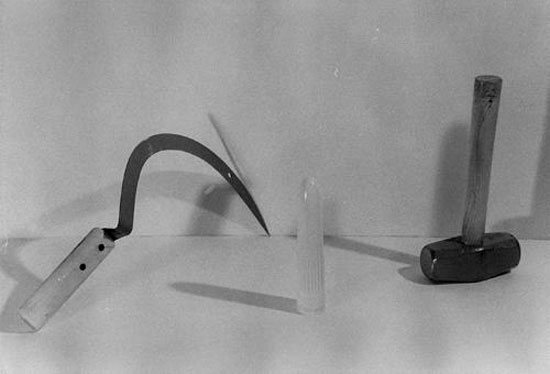Andy Warhol, “Interview with Gene Swenson,” in Art in Theory, 1900–2000: An Anthology of Changing Ideas, eds. Charles Harrison and Paul Wood (Malden, MA: Blackwell, 2003), 747. Original citation: “What is Pop Art? Interviews with Eight Painters (Part I),” Art News (November 1963).
Andreas Huyssen, “The Cultural Politics of Pop: Reception and Critique of US Pop Art in the Federal Republic of Germany,”New German Critique 4 (Winter 1975): 77–97. For another perspective on the implications and contradictions of these democratizing claims for Pop, see Benjamin Buchloh, “Andy Warhol’s One-Dimensional Art: 1956–1966,” in Kynaston McShine, Andy Warhol: A Retrospective (New York: MoMA, 1989), 39–61.
See, for example, Thomas Crow, “Saturday Disasters: Trace and Reference in Early Warhol,” Modern Art in the Common Culture (New Haven: Yale University Press, 1996), 49–65.
Caroline Jones explains: “The adoption of the name ‘Factory’ was a collective effort on the part of Warhol and his collaborators (primarily Billy Linich/Name and Gerard Malanga), clearly intended to displace the time-honored trope of the isolated studio with a term that would make room for them all in its collective embrace.” See Caroline A. Jones, Machine in the Studio: Constructing the Postwar American Artist (Chicago: University of Chicago Press, 1996), 192–198.
By attaching Warhol to the manager model, not only of the factory but also of the more affective economy of “coolness” and culture, I am expanding upon Jones, who argues that “the Factory and its productions were complex signifiers, shifting from the proletarian to the executive to the consumer, playing with gender and power in a social and cultural context that was itself in heady flux.” Jones, Machine in the Studio, 189.
Thierry de Duve argues that Beuys embodied an idea of the proletarian/bohemian, connecting Beuys very much to the notion of species-being in early Marx. See Thierry de Duve, “Joseph Beuys, or The Last of the Proletarians,” October 45 (Summer 1988): 47–62.
Joseph Beuys on the Organization for Direct Democracy, reproduced and translated in Caroline Tisdall, Joseph Beuys(New York: Guggenheim Museum, 1979), 268–269.
For example, see these highly disparate arguments about the nature of the social relations that Beuys gives form to and how: Donald Kuspit, “Beuys: Fat, Felt, and Alchemy,” Art in America (May 1980): 78–89; and Benjamin Buchloh, “Beuys: The Twilight of the Idol, Preliminary Notes for a Critique,” Neo-Avantgarde and Culture Industry (Cambridge, MA: MIT Press, 2000), 40–64. Also see Jan Verwoert, “The Boss: On the Unresolved Question of Authority in Joseph Beuys’ Oeuvre and Public Image,” e-flux journal 1 (December 2008), →.
To give an idea, it begins: “The development of a new concept of money follows logically from the description of creativity and ‘ability value’ which recognizes the flow of human beings to the places of production as the real capital.” For the full text, see Tisdall, Joseph Beuys, 264.
In their 2004 essay “The University and the Undercommons” (now part of a book), Fred Moten and Stefano Harney struggled with this very paradox: “It can not be denied that the university is a place of refuge and it cannot be accepted that the university is a place of enlightenment.” They discuss the continual constitution of insides and outsides, critical modes and complicit ones, formed ultimately to legitimize the university as a whole. The absence of any utopian, redemptive language is striking, but so is the lack of total dismissal or fantasy of exodus or escape. Fred Moten and Stefano Harney, “The University and the Undercommons: Seven Theses,” Social Text 79 (Vol. 22, No. 2) (Summer 2004): 100.
For an analysis of the darker side of these practices, see the essays compiled in Digital Labor: The Internet as Playground and Factory, ed. Trebor Scholz (New York: Routledge, 2012).
A version of this text was originally delivered as a presentation on the occasion of the exhibition SOLO SHOW* at e-flux, Tuesday November 17, 2013.
